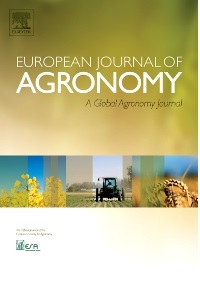Importance of genetic parameters and uncertainty of MANIHOT, a new mechanistic cassava simulation model
We identified the most sensitive genotype-specific parameters (GSPs) and their contribution to the uncertainty ofthe MANIHOT simulation model. We applied a global sensitivity and uncertainty analysis (GSUA) of the GSPs tothe simulation outputs for the cassava development, growth, and yield in contrasting environments. We com-pared enhanced Sampling for Uniformity, a qualitative screening method new to crop simulation modeling, andSobol, a quantitative, variance-based method. About 80% of the GSPs contributed to most of the variation inmaximum leaf area index (LAI), yield, and aboveground biomass at harvest. Relative importance of the GSPsvaried between warm and cool temperatures but did not differ between rainfed and no water limitation con-ditions. Interactions between GSPs explained 20% of the variance in simulated outputs. Overall, the most im-portant GSPs were individual node weight, radiation use efficiency, and maximum individual leaf area. Basetemperature for leaf development was more important for cool compared to warm temperatures. Parameteruncertainty had a substantial impact on model predictions in MANIHOT simulations, with the uncertainty 2–5times larger for warm compared to cool temperatures. Identification of important GSPs provides an objectiveway to determine the processes of a simulation model that are critical versus those that have little relevance.

